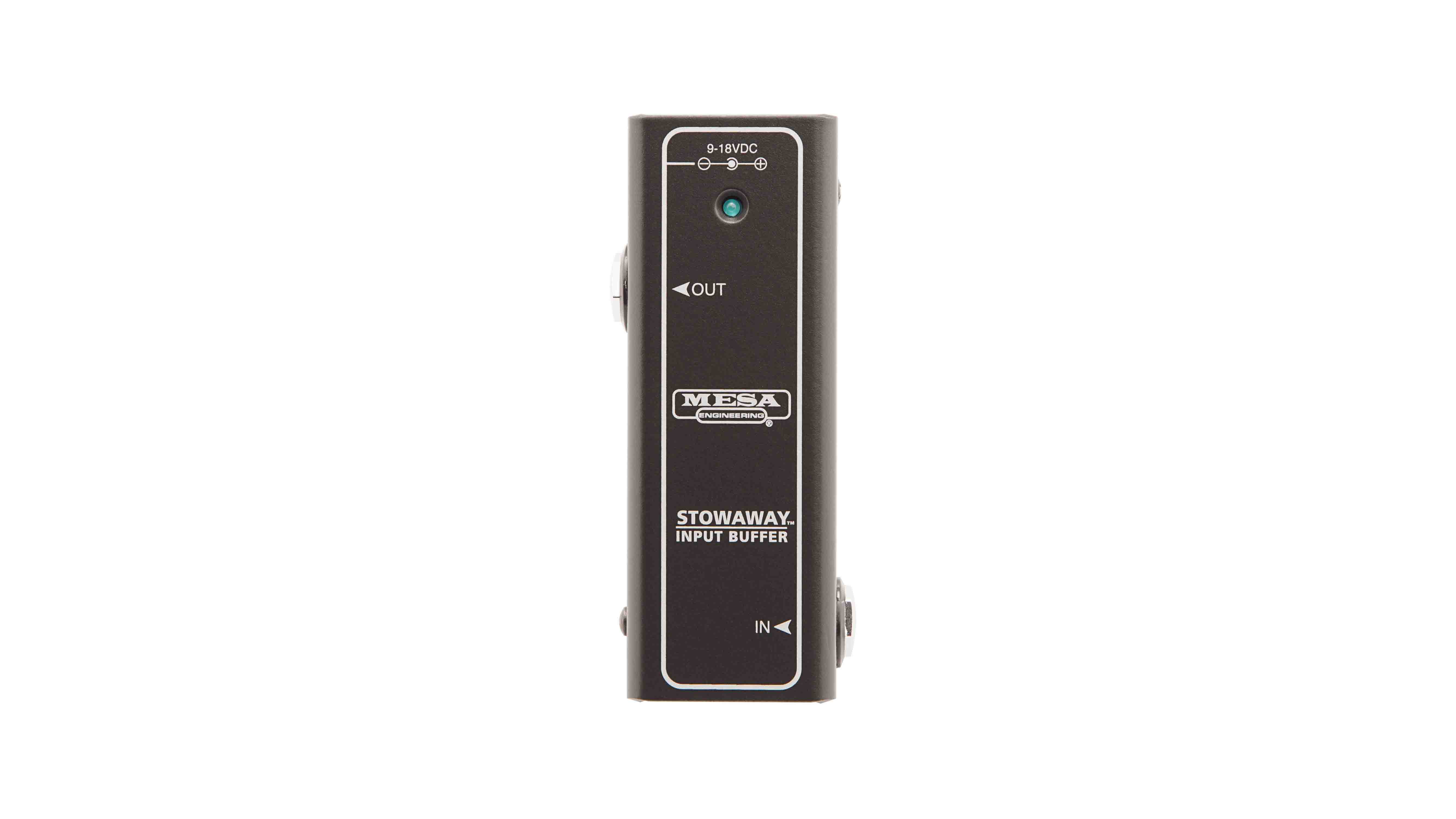Mesa/Boogie gets into the signal-management game with 4 new buffer and line-driver pedals
Stowaway, High-Wire and Clearlink units promise to be ultimate problem-solvers

Introduction
Sure, its amps are known the world over, but Mesa/Boogie also makes a mean pedal - case in point, the ferocious Throttle Box EQ - and the company is now making strides into the utility pedal arena with four new buffer and line driver solutions.
The pedals include the Stowaway Input Buffer, High-Wire Dual Buffer, Clearlink (Send) Line Driver and Clearlink (Receive) Converter.
Each one is built in Petaluma, California, and promises the utmost in components and signal integrity. Read on for more…

Mesa/Boogie Stowaway Input Buffer
Small enough to mount underneath angled pedalboards, the ultra-compact - and aptly named - Stowaway is a Class A input buffer with RFI filtering, designed to deal with all manner of input issues.
From impedance loading and mismatching to changes in a pickup’s character and response owing to pedal and cable impedance, the Stowaway promises to “provide the tone and feel of plugging directly into a high-quality tube amp”.

Mesa/Boogie High-Wire Dual Buffer
“The ultimate all-in-one pedalboard signal loss remedy”, according to Mesa, the High-Wire solves input and output problems in one chassis.
As well as providing a stable, consistent load for guitar pickups, the High-Wire buffers the signal between pedalboards and amps, and features a built-in Clearlink output line driver with +3dB level comp switch to drive long cable runs.
Add in a tuner output and variable, footswitchable boost control that can provide up to 22dB of output boost, and you’re looking at one seriously useful stompbox.

Mesa/Boogie Clearlink (Send) Line Driver
Designed to go between your pedalboard and your amp, the Clearlink can send a balanced or unbalanced signal to compensate for volume and tone loss from long cable runs.
Combine it with the Clearlink Receive (Converter) (coming up over the page), it can drive balanced cable runs of up to 330 feet, noise-free. Wowsers.
An output level control boosts the signal up to 12dB, while balanced XLR and 1/4” outputs are also onboard. Plus, a 9V through port can pass power onto a Stowaway Input Buffer.

Mesa/Boogie Clearlink (Receive) Converter
This one is “the ultimate solution for all instruments where signal must travel longer than 20 feet”, apparently.
Mesa suggest pairing it with the Clearlink Send to convert a balanced signal back to an unbalanced signal for an amp input, but it can also be used for any isolation job where grounds cannot be shared, such as a multi-amp switching setup.
The passive design packs a Jensen Audio isolation transformer, plus a combination XLR/1/4” input and ¼” unbalanced output. Phase and ground switches deal with any potential noise issues.
Mike has been Editor-in-Chief of GuitarWorld.com since 2019, and an offset fiend and recovering pedal addict for far longer. He has a master's degree in journalism from Cardiff University, and 15 years' experience writing and editing for guitar publications including MusicRadar, Total Guitar and Guitarist, as well as 20 years of recording and live experience in original and function bands. During his career, he has interviewed the likes of John Frusciante, Chris Cornell, Tom Morello, Matt Bellamy, Kirk Hammett, Jerry Cantrell, Joe Satriani, Tom DeLonge, Radiohead's Ed O'Brien, Polyphia, Tosin Abasi, Yvette Young and many more. His writing also appears in the The Cambridge Companion to the Electric Guitar. In his free time, you'll find him making progressive instrumental rock as Maebe.
